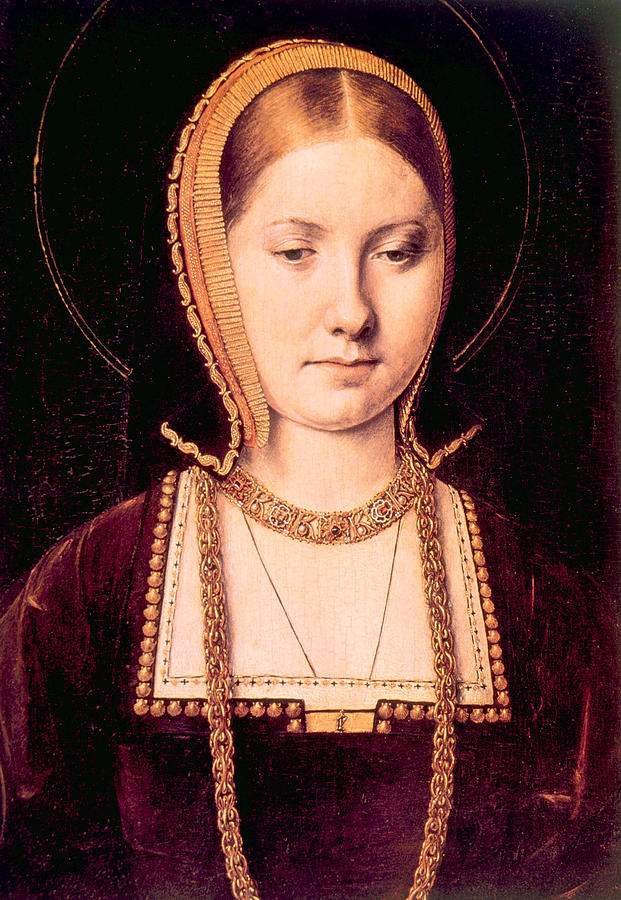

Above: Henry VII, the first Tudor (left), died aged fifty-two on 21 April 1509.
He was succeeded by his only living son, Henry, who now became Henry VIII (right).
On this day in history, 21 April 1509, the first chapter of the story of the Tudor dynasty came to an end when, after slightly less than twenty-four turbulent and troublesome years on the Tudor throne, the reign of the first Tudor, Henry VII, came to an end. The fifty-two year old king died at his favourite palace, Richmond, in Surrey. He was succeeded by his seventeen-year old son, the handsome and charismatic Prince Henry, who now succeeded to the throne as Henry VIII of England. Henry VII's death ushered in his son's succession - he would reign as king of England for thirty-eight controversial years, beginning his reign as a golden, enigmatic prince, and ending it as a bloodthirsty and feared tyrant.
Henry VII's biographer Thomas Penn, author of the critically acclaimed Winter King, states that the first Tudor 'made an exemplary death', dying in the Roman Catholic faith. His death, similarly to that of his grandson Edward VI some 44 years later, was kept secret for a few days, to prepare his teenage son for kingship. The late king's formidable mother, the sixty-five year old Lady Margaret Beaufort, took charge of court proceedings and helped her young grandson in the first days of his rule. The new king was received excitedly by his subjects, and he was praised by contemporaries for his 'personal endowments', musical talents, linguistic ability, and his expertness 'in arms and of great valour'. It must have seemed, to the English people, like a return to the glorious kingship of Edward IV some forty years earlier. Similarities between the first Yorkist king, Edward, and his grandson Henry VIII have often been noted by historians.

Above: Upon his accession, Henry VIII took as his wife his elder brother's widow, the beautiful and pious Katherine of Aragon (1485-1536).
Although Henry VII had been a successful king, by and large, he faced numerous rebellions throughout his reign and was never fully secure on his throne. His last years were characterised by personal tragedy, suspicion, and increasing hostility to the avaricious monarch. His beloved heir, Arthur Tudor, died in 1502 aged just fifteen and the king's pious and popular consort, Queen Elizabeth of York, died the following year in childbed. Her death severely affected her young son, Henry. King Henry VII considered taking another wife, with rumours even going so far as to suggest a marriage with his late son's widow Katherine of Aragon, but he never did remarry. Romantics might fancy this was because he felt no woman could replace his beloved queen - but whether or not this is true is impossible to ascertain.
So acceded Henry VIII to the English throne in the spring of 1509. At that moment, none of his hopeful and excited subjects could have foreseen the momentous religious, political and governmental changes that his monumental reign would usher in. They would never have believed that their new monarch would put to death his favourite advisers (including Wolsey - spared by his own death from a traitor's death - More and Cromwell); divorce his beloved queen Katherine and break with the Roman Catholic Church; marry six women and execute two of them; or put to death over 70,000 subjects. At the onset of his reign, the glamorous and enigmatic Henry VIII seemed the leader of a new golden age, a revival in England's fortunes. His subjects almost certainly predicted a vastly different reign for their new king contrasted with that of his suspicious and unpopular father. They were right - but they could never have foreseen in what way.



Above: The children of Henry VIII and the grandchildren of Henry VII - Mary Tudor (left), Elizabeth Tudor (centre), and Edward Tudor (right).
No comments:
Post a Comment